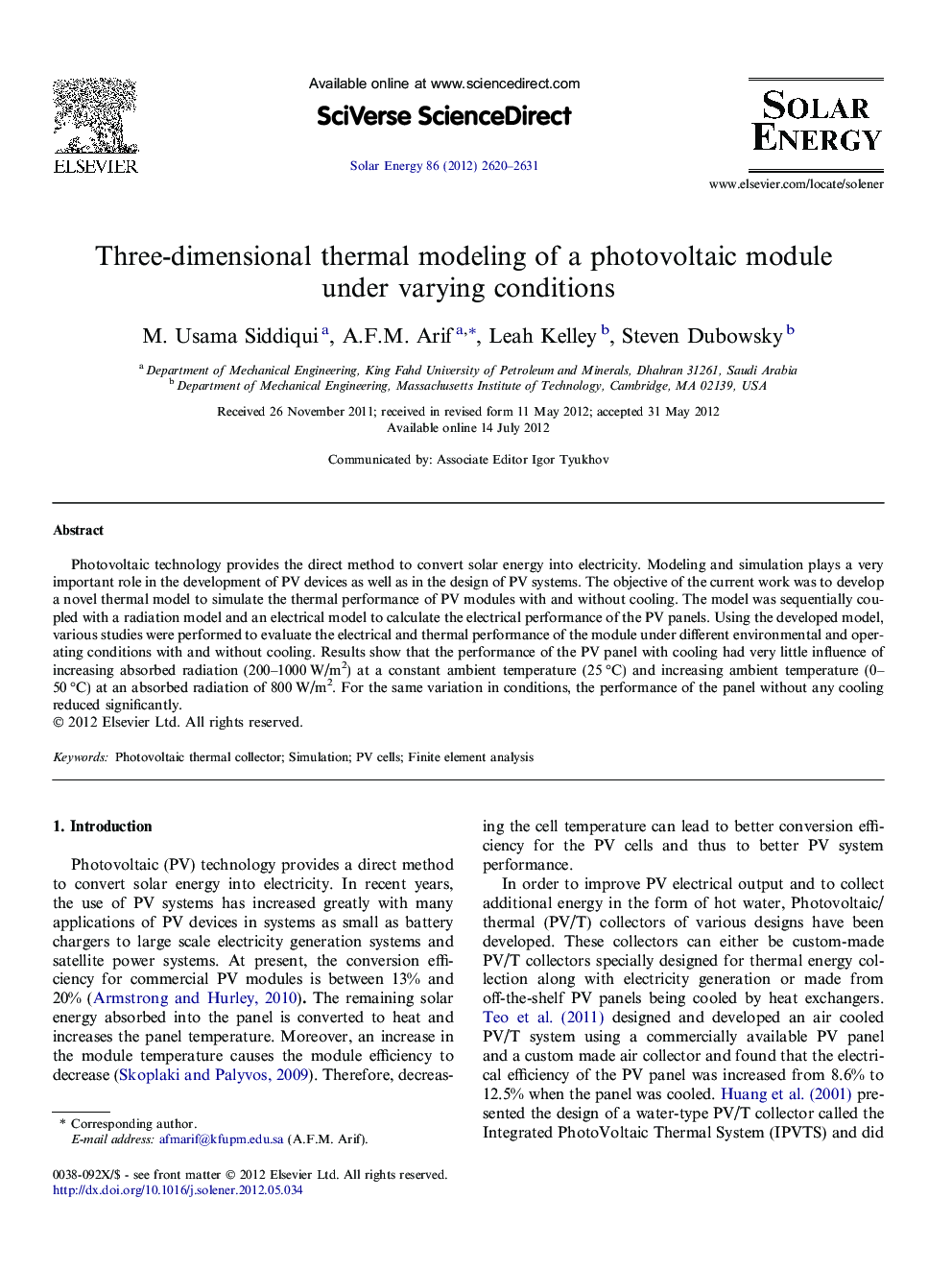| Article ID | Journal | Published Year | Pages | File Type |
|---|---|---|---|---|
| 1550912 | Solar Energy | 2012 | 12 Pages |
Photovoltaic technology provides the direct method to convert solar energy into electricity. Modeling and simulation plays a very important role in the development of PV devices as well as in the design of PV systems. The objective of the current work was to develop a novel thermal model to simulate the thermal performance of PV modules with and without cooling. The model was sequentially coupled with a radiation model and an electrical model to calculate the electrical performance of the PV panels. Using the developed model, various studies were performed to evaluate the electrical and thermal performance of the module under different environmental and operating conditions with and without cooling. Results show that the performance of the PV panel with cooling had very little influence of increasing absorbed radiation (200–1000 W/m2) at a constant ambient temperature (25 °C) and increasing ambient temperature (0–50 °C) at an absorbed radiation of 800 W/m2. For the same variation in conditions, the performance of the panel without any cooling reduced significantly.
► Development of three dimensional numerical models to predict PV panel performance. ► Sequential coupling of radiation and electrical models with 3D thermal model. ► Investigation of the PV panel performance with and without cooling. ► Parametric studies under different environmental and operating conditions. ► Studies show need of cooling in hot ambient conditions.
